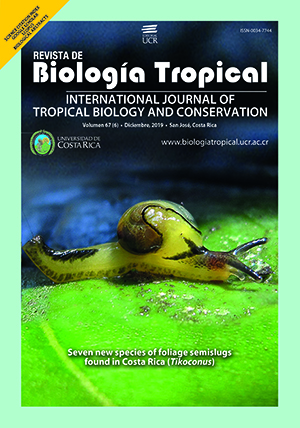Abstract
Ability of many species of lizards to decrease their maintenance cost during changes in environmental temperatures is probably related to their success in coping with a fluctuating environment. In Argentina, Liolaemus chacoensis is a species known in the Arid Chaco sector of Plain, this region is a subtropical area that presents well-marked seasonal differences and environmental mean temperatures are increasingly variable. The aim of this work was to determine how environmental temperatures influence the thermoregulation of L. chacoensis and to know if the population responds as a unit or there are differences between sex and season. The individuals were captured by hand in the southern sector of Valle Fértil, province of San Juan. A total of 44 adult individuals were captured during the months of November 2014 (spring), February 2015 (summer) and March 2015 (autumn). In spring, 17 individuals were captured (9 females and 8 males); for the summer there were 10 individuals in total (5 females, 5 males) and in autumn 17 lizards (7 females, 10 males). The body temperature (Tb), temperature of substrate (Ts) and air (Ta) were recorded and the thermal availability of the habitat was evaluated from the perspective of a non-thermoregulatory organism, using biophysical models. In the laboratory, selected temperature (Tsel) was studied. Then the thermoregulatory efficiency index (E) was calculated. The field body temperature in autumn was 3.86 °C lower with respect to spring and 2.84 °C lower than that of summer, which is related to the dependence found between Tb and Ta. The mean of Tsel between the seasonal was similar (P > 0.05). The thermoregulatory efficiency index indicates that L. chacoensis would behave like a moderate thermoregulator (E = 0.33), except for autumn (E = 0.01), where it is observed that they tend to have no thermoregulation. When analyzing the different population segments of L. chacoensis, a marked seasonal heterogeneity was observed in the thermal biology and the active selection of the microsites seems to be a mechanism responsible for maintaining the body temperature of the species.
##plugins.facebook.comentarios##

This work is licensed under a Creative Commons Attribution 4.0 International License.
Copyright (c) 2019 Graciela Vanesa Astudillo






